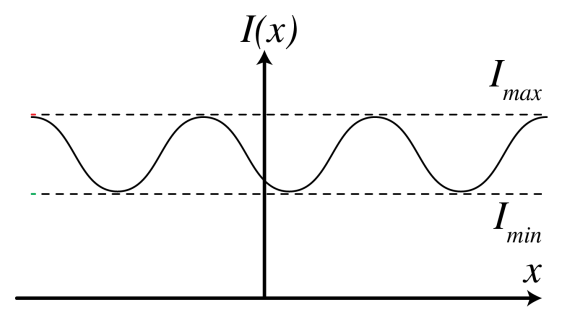5.10: Fringe Visibility
( \newcommand{\kernel}{\mathrm{null}\,}\)
We have seen that when the interference term Re⟨U∗1U2⟩ vanishes, no fringes form, while when this term is nonzero, there are fringes. The fringe visibility is expressed directly in measurable quantities (i.e. in intensities instead of fields). Given some interference intensity pattern I(x) as in Figure 5.10.1, the visibility is defined as V=Imax−IminImax+Imin. fringe visibility.
For example, if we have two perfectly coherent, monochromatic point sources emitting the fields U1,U2 with intensities I1=|U1|2,I2=|U2|2, then the interference pattern is with (5.6.13): I(τ)=I1+I2+2√I1I2cos(ωτ+φ).
We then get Imax=I1+I2+2√I1I2,Imin=I1+I2−2√I1I2, SO V=2√I1I2I1+I2
In case I1=I2, we find V=1. In the opposite case, where U1 and U2 are completely incoherent, we find I(τ)=I1+I2, from which follows Imax=Imin=I1+I2, which gives V=0.


